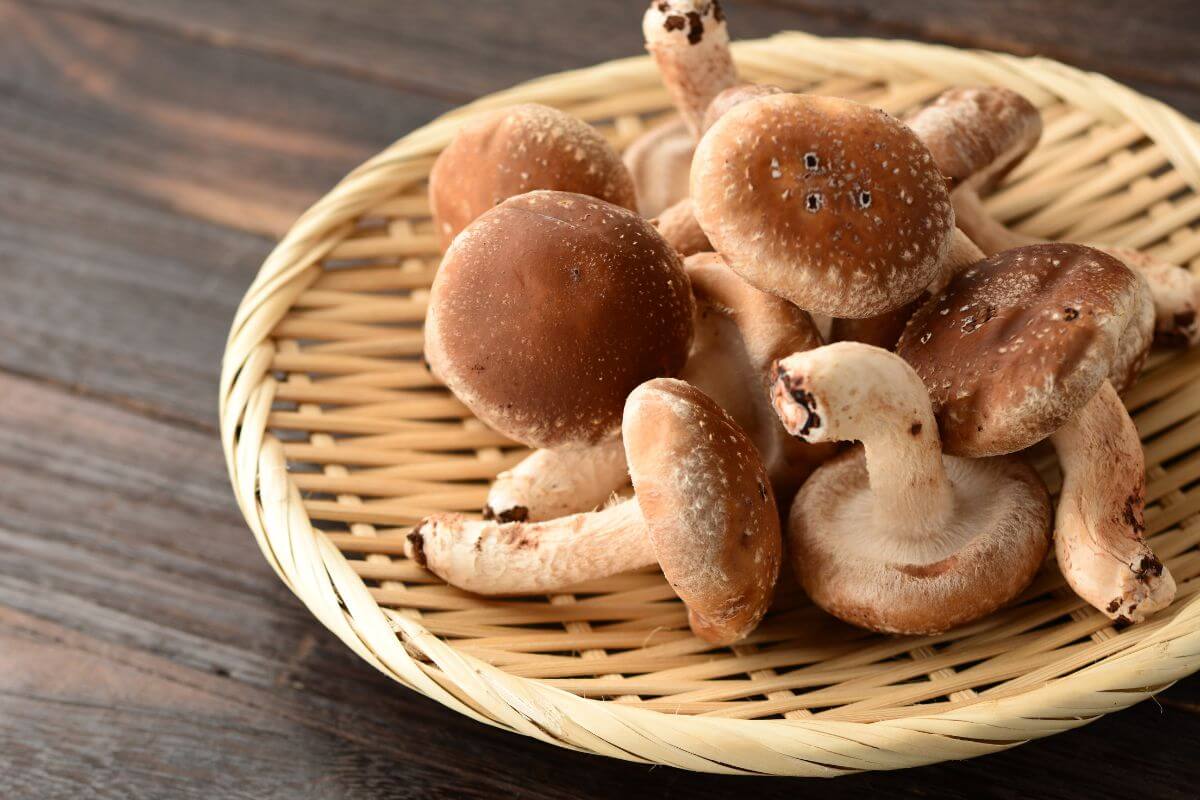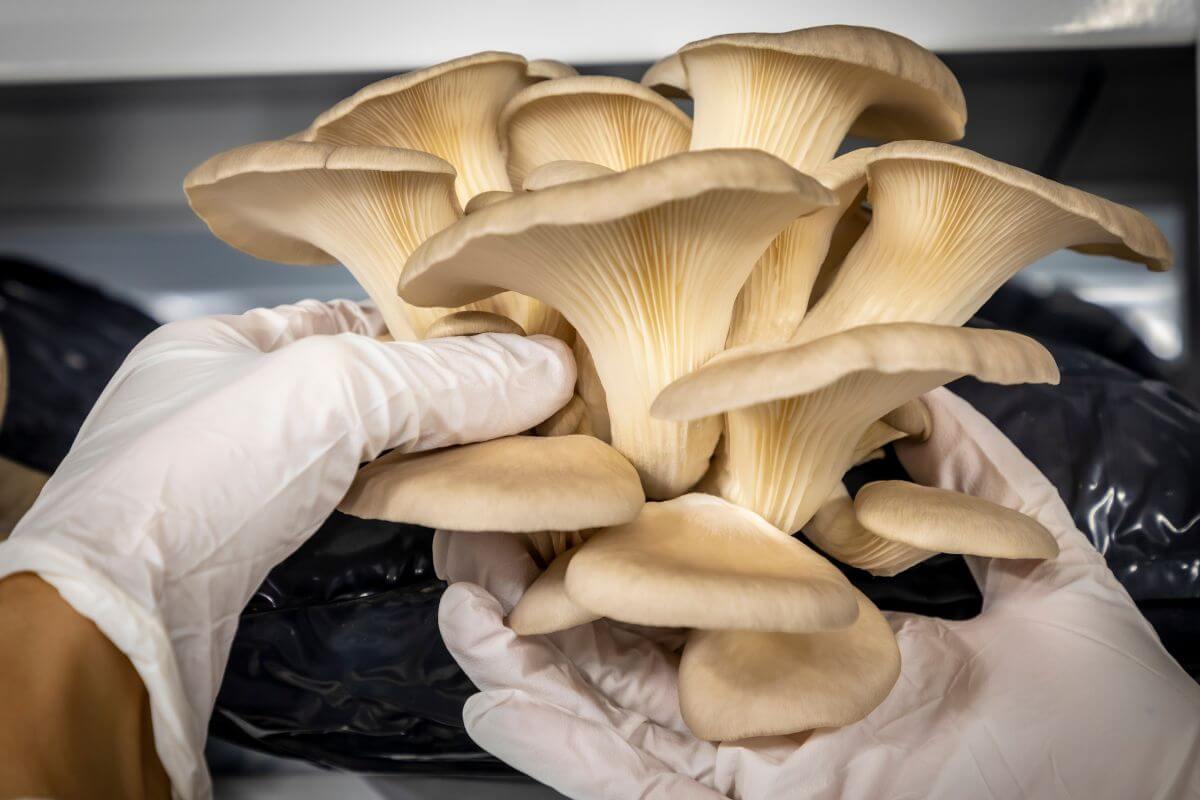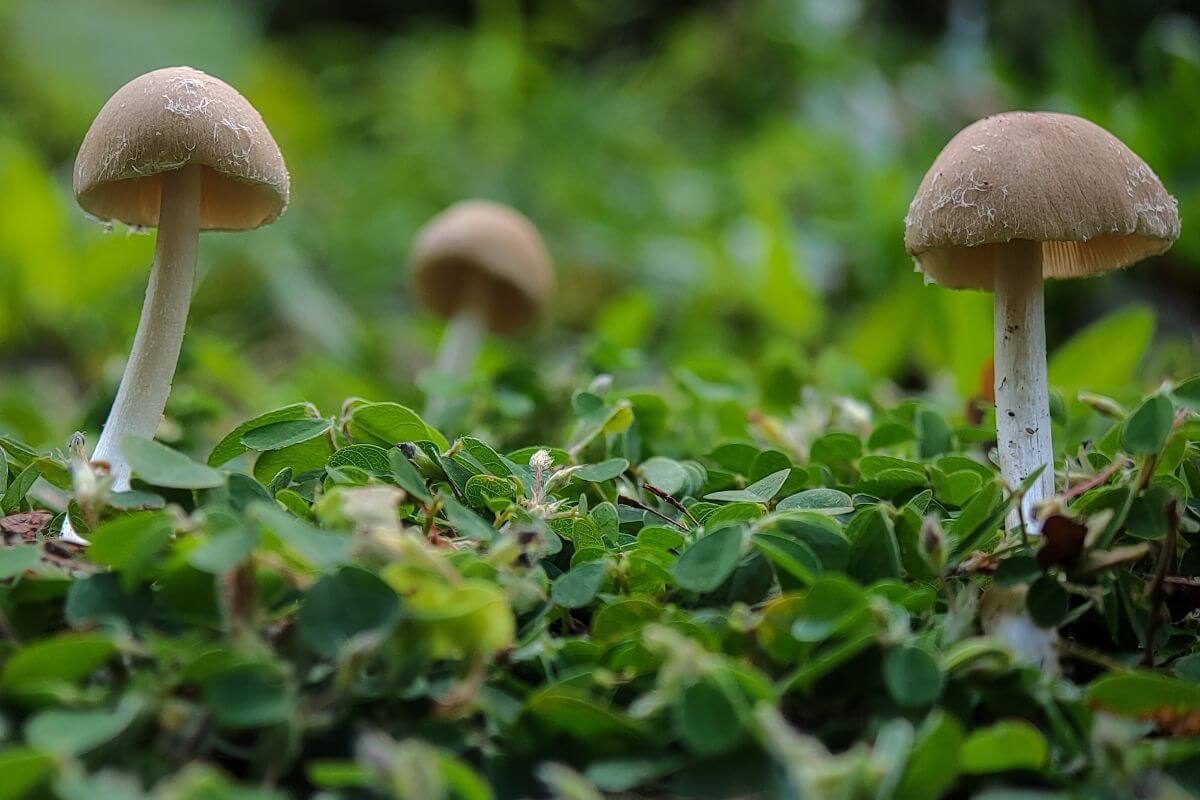Are mushrooms considered vegetables? It would be easy to think so. They pop up in salads, soups, and stir-fries, but their unique characteristics set them apart from typical veggies. Let’s dive into the world of mushrooms and uncover what makes them so special.
I’ll explore what mushrooms are, how they grow, and why they don’t fit into the vegetable category. You’ll learn about their nutritional benefits and the various types you can enjoy. Plus, I’ll discuss how mushrooms contribute to sustainable farming.
Curious to know more about these fascinating fungi? Keep reading to discover why mushrooms deserve a unique spot on your plate!
- Related article: How Are Fruits Different From Vegetables?
5 Key Takeaways on Is Mushroom a Vegetable
- Mushrooms are part of the fungi kingdom, not the plant kingdom. They break down organic matter to get nutrients, unlike vegetables which are plant parts.
- Mushrooms have a unique nutritional profile. They are rich in B vitamins, vitamin D, selenium, copper, potassium, and fiber. These nutrients are not typically found in high amounts in vegetables.
- Mushrooms grow from spores into an underground network called mycelium. This network produces the mushroom “fruit” above ground. This is very different from how vegetables grow and reproduce.
- Mushrooms have a cap, stem, and gills. They reproduce through spores, not seeds. This structure and reproductive method are unlike those of vegetables.
- In cooking, mushrooms are treated differently from vegetables. They add umami flavor, texture, and depth to dishes. They play a special role in the human diet beyond just providing vitamins and minerals.
What Are Mushrooms?

Mushrooms are fungi, not plants. They get nutrients by breaking down organic matter rather than photosynthesizing. You usually see them on food sources, on the ground, or top of the soil. They grow in forests, fields, and meadows.
There is a wide variety of edible mushroom species. But some mushrooms can be poisonous, so only eat mushrooms that have been properly identified.
Mushrooms have a unique life cycle. They start as spores that grow into an underground network called mycelium. This network then produces the mushroom “fruit” we see above ground.
Growing mushrooms commercially requires precise control of temperature, humidity, and airflow to replicate ideal growing conditions.
Mushrooms are a sustainable food source. They require less land, water, and energy than many other crops.
Some mushrooms have bioluminescent properties and can naturally glow in the dark. This phenomenon is known as “foxfire.”
Raw mushrooms and fresh mushrooms are often used in various dishes for their unique flavors and textures.
Is Mushroom a Vegetable?
Mushrooms are neither vegetables nor fruits. They have a unique taste and look. But they do not belong to the fruit or vegetable family.
Why aren’t mushrooms vegetables? Here are the key reasons:
- Mushrooms belong to the fungi kingdom, not the plant kingdom. Vegetables are usually roots, stems, leaves, or other parts of plants. Mushrooms do not photosynthesize like plants. They get nutrients by breaking down organic matter.
- Mushrooms have a different structure. They have a cap, stem, and gills, unlike vegetables. They reproduce through spores, not seeds. The “roots” of mushrooms, called mycelium, grow underground and are unlike plant roots.
- Mushrooms have a unique nutritional profile. They are rich in B vitamins, vitamin D, selenium, and other nutrients. These nutrients are not typically found in high amounts in vegetables. The combination of nutrients in mushrooms is unique.
- In cooking, mushrooms are treated differently than vegetables. They add umami flavor, texture, and depth to dishes. They are not just a source of vitamins and minerals like many vegetables. Mushrooms play a special role in the human diet.
How Do Mushrooms Grow?

Mushrooms start from fungal spores. These spores grow into a lacy root network called mycelium. The mature mycelium then produces the mushroom “fruit” we see above ground. This mushroom releases spores to continue the lifecycle and spread to new areas.
Mushrooms need precise conditions to grow. This includes controlled temperature, humidity, and airflow. They do not need light as they get nutrients from their growing medium. Common mediums include compost, straw, sawdust, logs, and other organic materials.
Commercial mushroom farms are usually indoors. This helps replicate ideal growing conditions. Farmers monitor and adjust temperature, humidity, and air circulation. They also sterilize the growing medium to prevent contamination.
Home growers can use kits or create their setups. Materials like compost, logs, or sawdust work well. Key steps include inoculating the medium with mushroom spawn, maintaining moisture, and providing airflow. Mushrooms grown at home still need controlled conditions. A shed, basement, or other sheltered place works best.
Are Mushrooms Nutritious?
Edible mushrooms have several health benefits and are a great source of nutrients needed by the human body to stay healthy and strong. Let’s take a look at their nutritional profile.
| Aspect | Details |
|---|---|
| Nutritional Content | Low in calories |
| Rich in B vitamins, vitamin D, selenium, copper, potassium, and fiber | |
| High in antioxidants | |
| Health Benefits | Supports the immune system, heart health, weight management, and brain health |
| Antioxidants reduce inflammation and protect against chronic diseases like cancer and diabetes | |
| Culinary Uses | Can be eaten raw or cooked |
| Add to salads, soups, sauces, and main courses | |
| Different types of mushrooms offer various nutrients | |
| Availability | Available in most grocery stores |
| Can be found fresh, canned, or dried | |
| Affordable and easy to prepare |
Different Mushroom Varieties to Try Out
From mushroom farms to wild mushrooms like common white mushrooms, there’s a wide range of options to explore. Let’s have a look at some of the most popular ones.
- White Button Mushroom (Agaricus bisporus) – This white button mushroom has an oval shape and a smooth surface. White buttons are the most common edible mushrooms and are often used in salads.
- Portobello Mushroom (Agaricus bisporus) – Portobellos are larger, meatier, more mature white button mushrooms. They’re the same type of mushroom. The portobello is the adult and the white button is the child.
- Cremini Mushroom (Agaricus bisporus) – Creminis are similar to portobellos except they tend to be smaller. Cremini mushrooms are the teenagers.
- Morel Mushrooms (Morchella esculenta) – Morels are one of my favorite kinds of mushrooms, also known as the Sponge Mushroom. They have a distinct honeycomb appearance.
- Shiitake Mushroom – Shiitakes are another common mushroom found at grocery stores. They are native to East Asia and are popular worldwide. They’re also known to help lower cholesterol and reduce inflammation.
- Enoki Mushroom – Enokis are long and slender, commonly used in Japanese cuisine.
- Chanterelle Mushroom – Chanterelles are tiny little mushrooms that grow near oak trees. They have a delicate flavor.
- Truffle Mushroom – Truffle mushrooms look like large black olives. They are among the most expensive foods in the world because of how difficult they are to grow, and how hard it is to find and store.
- King Bolete Mushroom (Boletus rex-veris) – King boletes are popular mushrooms to eat. They can be fried, sauteed, and even microwaved.
- Porcini Mushroom (Boletus edulis) – Porcinis are eaten dried or fresh, and popular in French and Italian cuisine.
- Giant Puffball Mushroom – Giant puffballs are huge balls with no stem. They can weigh up to 20 pounds. Yes, they are edible mushrooms too.
- Maitake Mushroom (Hen-of-the-wood) – Maitake mushrooms are grown under logs and harvested after about two years. They are considered medicinal mushrooms due to their high vitamin content.
- Oyster Mushroom (Pleurotus ostreatus) – Oyster mushrooms are round and flat. They are commonly sold fresh in supermarkets.
10 Tips for Growing Mushrooms

Growing mushrooms need some know-how. You need to pick the right conditions, prepare the soil, and harvest safely.
1. Learn About Mushrooms:
- Basics – Understand growth conditions, anatomy, life cycle, and terms.
- Varieties – Know different types and their needs.
- Techniques – Study methods like kits, logs, beds, and indoor setups.
2. Join a Mushroom Community:
- Connect – Join online forums, local groups, or workshops. Share tips and stay motivated.
- Follow Experts – Watch mushroom farmers on social media and YouTube for advice.
3. Set Up Your Growing Area:
- Space – Choose a shed, garage, or cellar. Control temperature and humidity.
- Sanitize – Clear clutter and disinfect surfaces to avoid contamination.
- Light – Use blackout curtains for darkness.
- Temperature – Use a thermometer to adjust heating and cooling.
- Humidity – Use a humidifier or tent for moisture.
- Airflow – Set up fans or vents for circulation.
4. Avoid Common Mistakes:
- Sterilization – Properly sterilize to prevent contamination.
- Watering – Keep the substrate moist but not waterlogged.
- Temperature – Maintain stable temperatures.
- Light – Protect mushrooms from too much light.
- Harvesting – Pick mushrooms at the right stage for quality.
5. Study the Growth Process:
- Mycelium – Start with a sterile medium and spores. Let mycelium colonize.
- Fruiting – Adjust conditions to form mushrooms.
6. Use Growing Kits:
- Start with Kits – Learn the process with kits.
- Choose the Right Kit – Includes spawn and growing media like wood shavings or straw.
7. Get the Right Equipment:
- Tools – Buy tools for cultivation like inoculators, humidifiers, and thermometers.
- Substrate – Use rich, fertile, and moisture-retentive mediums like horse manure or compost.
8. Set Goals:
- Objectives – Define your goals, whether personal use or selling.
- Track Progress – Keep records of temperature, humidity, and issues.
9. Get Outside Help:
- Books – Read guides like “Growing Gourmet and Medicinal Mushrooms” by Paul Stamets.
- Courses – Take online courses or workshops for hands-on skills and expert advice.
10. Just Start:
- Small Steps – Begin with a small project and scale up.
- Patience – Mushroom growing takes time and patience. Expect trial and error.
Growing mushrooms has many benefits. They are nutritious and can be a rewarding hobby or business.
Different Ways to Add Mushrooms to Your Diet

Here are some different ways to add mushrooms to your diet:
- You can add mushrooms to coffee and drinks. Mix mushroom powder like chaga or lion’s mane into your morning coffee for a nutritional boost. You can also blend mushroom powder into smoothies, shakes, teas, or other drinks.
- Use mushroom powder in cooking. Incorporate it into soups, gravies, sauces, and other savory dishes. You can also sprinkle it onto roasted vegetables, grains, or proteins.
- Make mushroom tea. Steep mushroom powder in hot water to make mushroom-infused tea. Add honey, cinnamon, or other herbs and spices to customize the flavor.
- Add fresh or sautéed mushrooms to meals. Sauté mushrooms and add them to omelets, pasta, pizza, burgers, or stir-fries. Slice or chop fresh mushrooms into salads, sandwiches, or as a topping.
- Bake with mushrooms. Use mushrooms in baked goods like breads, muffins, or savory pastries. You can also incorporate mushroom powder into baked goods for an extra nutrient boost.
- Take mushroom supplements. Consume mushroom supplements like capsules, tinctures, or extracts. Look for varieties like reishi, cordyceps, or lion’s mane.
Mushrooms are a low-calorie food with a meaty texture and can be used in a range of dishes.
What Mushrooms Should You Avoid?
If you’re wondering about mushrooms you should avoid, here’s a list due to their toxicity and health risks:
| Mushroom | Scientific Name | Description | Symptoms | Distribution |
|---|---|---|---|---|
| Death Cap Mushrooms | Amanita phalloides | Highly toxic, responsible for the majority of fatal mushroom poisonings worldwide. | Liver and kidney damage, leading to organ failure and death. | Found in various parts of the world, including the US. |
| Destroying Angel Mushrooms | Amanita bisporigera, A. ocreata, A. virosa | Closely related species with white caps and gills, containing amatoxins. | Disrupts cell metabolism, damaging many organs, including the liver and heart. | Found in woodlands, grassy meadows, and lawns across Europe and North America. |
| Common Conecap Mushrooms | Pholiotina rugosa | Nondescript, red-brown mushrooms common in the Pacific Northwest and other regions. | Gastrointestinal symptoms followed by liver failure and potential death. | Found in Europe, Asia, and North America. |
| Dapperling Mushrooms | Lepiota brunneoincarnata | Innocuous white-brown appearance, often mistaken for edible species. | Accidental poisonings can lead to liver failure and death. | Grows in grassy areas, often in gardens. |
| False Morel Mushrooms | Gyromitra species | Brain-like cap and creamy white stem, closely resembles edible morel mushrooms. | Contains the toxin gyromitrin, which can cause neurological and gastrointestinal symptoms. | Found in various regions, often mistaken for edible morels. |
| Fly Agaric Mushrooms | Amanita muscaria | Iconic red and white spotted toadstool contains toxic and psychoactive compounds. | Unpredictable, ranging from delirium and hallucinations to seizures and comas. | Found in various regions, often associated with magical creatures. |
Mushroom Is a Fungi Final Thoughts
Mushrooms are fungi, not fruits or veggies. They’re tasty additions to many meals. I’ve grown mushrooms at home and love using them in my cooking. You can add them to soups, and stir-fries, or even blend them into smoothies for a nutrient boost.
But here’s a word of caution: not all mushrooms are safe to eat. I once made the mistake of picking wild mushrooms without proper knowledge. It’s important to know which species are edible. Stick to growing or buying mushrooms from trusted sources.
Want to try growing mushrooms? It’s easier than you might think. I started with a simple kit and now have a small indoor mushroom garden. They’re like magic — one day there’s nothing, and the next, you’ve got a cluster of delicious fungi.
Remember, when it comes to mushrooms, safety first. But don’t let that scare you off. With a bit of knowledge, you can enjoy these fantastic fungi in countless ways. Ready to add some mushroom magic to your meals?
Mushroom Is a Fungi FAQs
1. What Food Group Is a Mushroom?
A mushroom belongs to the fungus family, which includes mushrooms, truffles, and portobello mushrooms. Mushrooms are found in all parts of the world, but they thrive best in temperate climates. They grow on decaying wood and produce spores that float through the air.
2. Is Mushroom a Healthy Vegetable?
Mushrooms are a fungus, but they are healthy. They are a great source of protein, fiber, potassium, iron, and other nutrients. However, they are also high in calories, which may lead to weight gain. The best way to eat mushrooms is to sauté them lightly with olive oil and garlic, then add them to salads, pasta dishes, soups, or stews.
3. What Is Defined as a Vegetable?
Vegetables are plants that grow underground, such as carrots, potatoes, beets, turnips, rutabaga, parsnip, and radishes. The term “vegetable” is also used for other types of plant food, such as broccoli, cabbage, cauliflower, celery, lettuce, onions, peppers, spinach, tomatoes, and zucchini.
4. Is a Mushroom a Fruit?
No, a mushroom is not a fruit. A mushroom is a member of the fungus family. Most mushrooms are edible, although some contain poisonous substances. Mushrooms grow from underground stems called mycelia. When they reach maturity, they produce spores which are spread through air currents.
5. Is Mushroom a Protein?
Yes, mushrooms are proteins! They contain all 9 essential amino acids, which makes them one of the best plant sources of protein. If you eat a lot of mushrooms, they will help you build muscle, increase your energy levels, and boost your immune system.
Here are other fruits and vegetables that people often have questions about:

